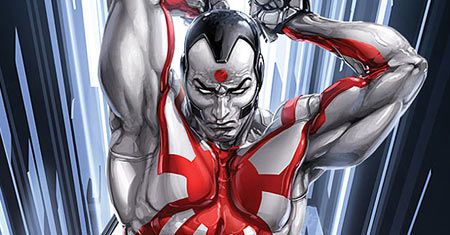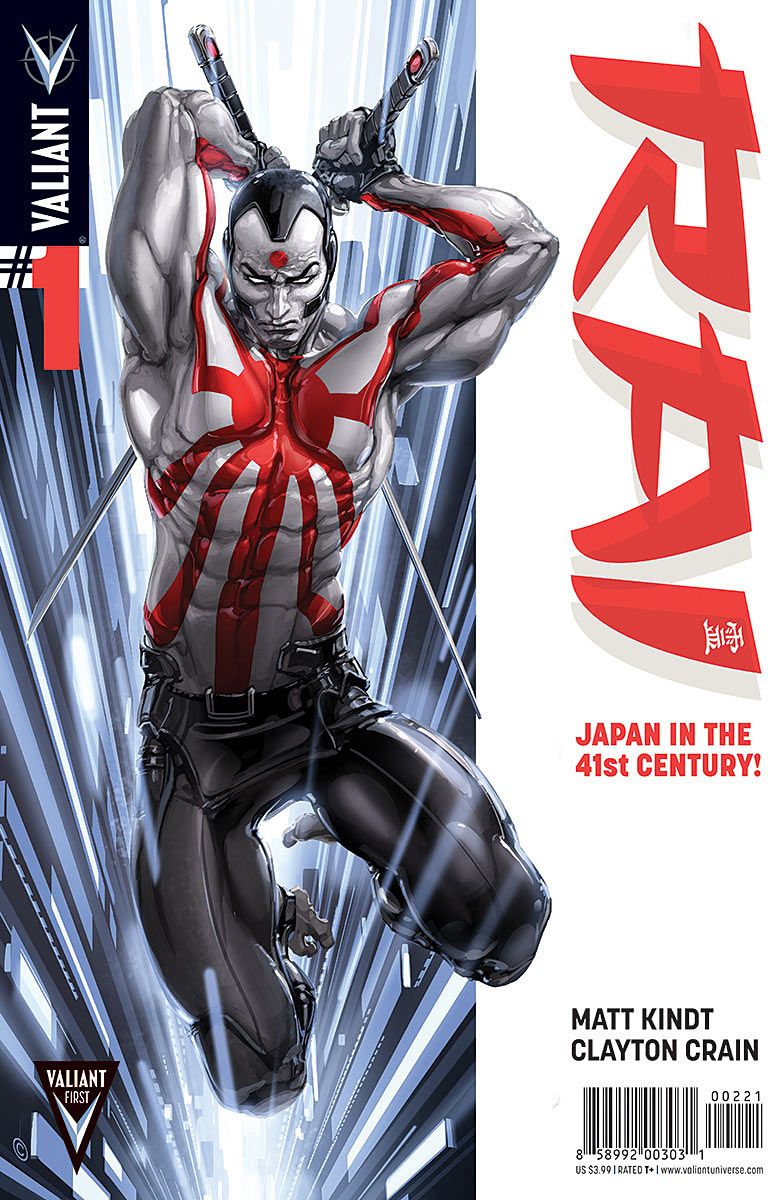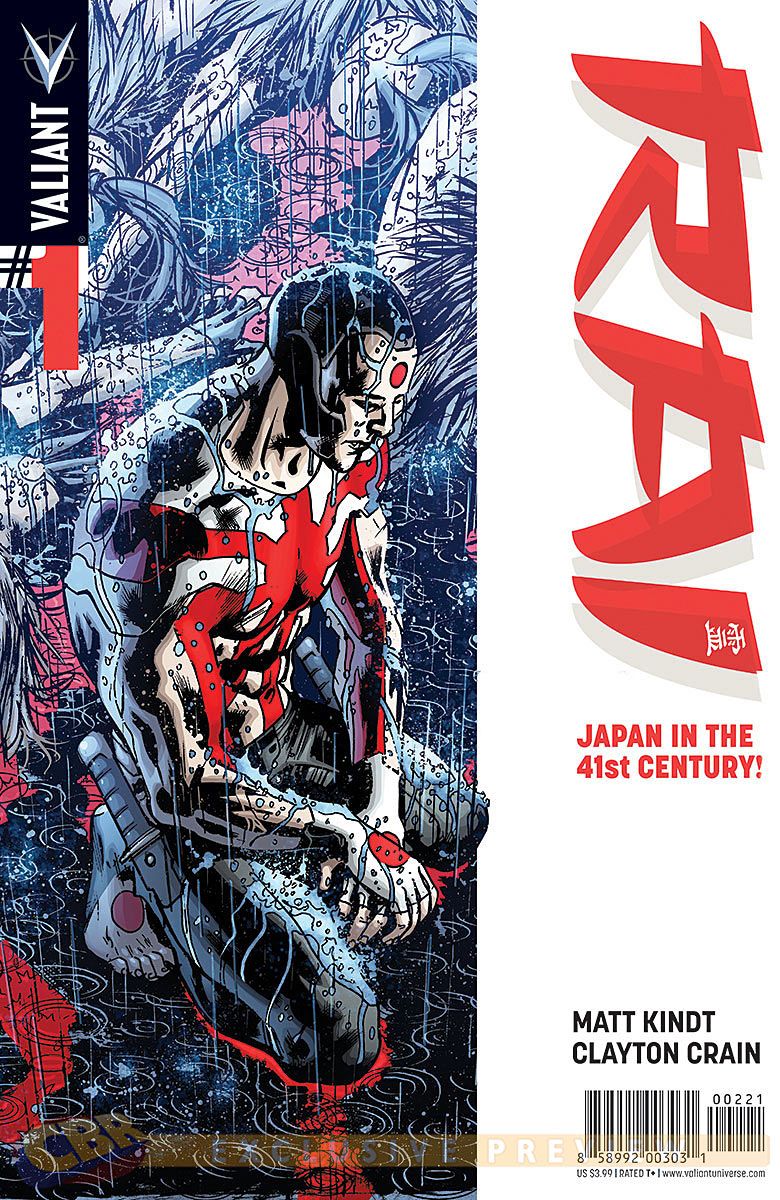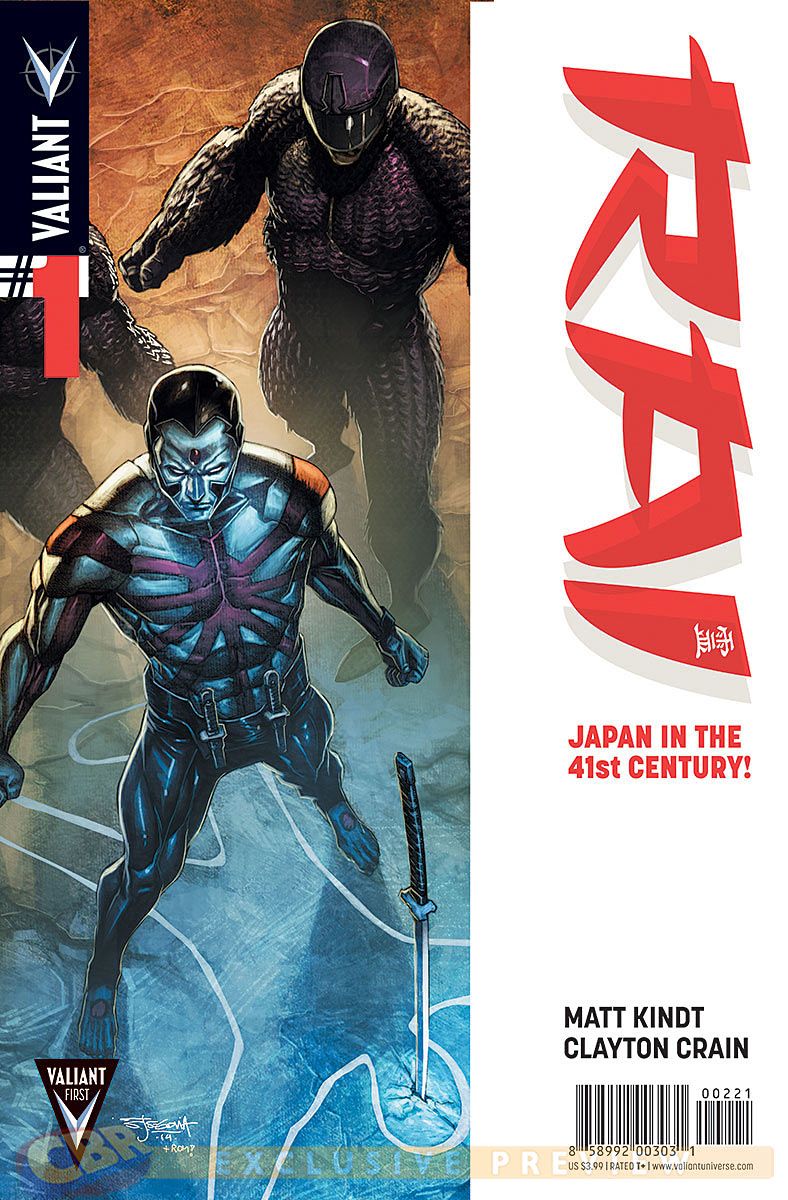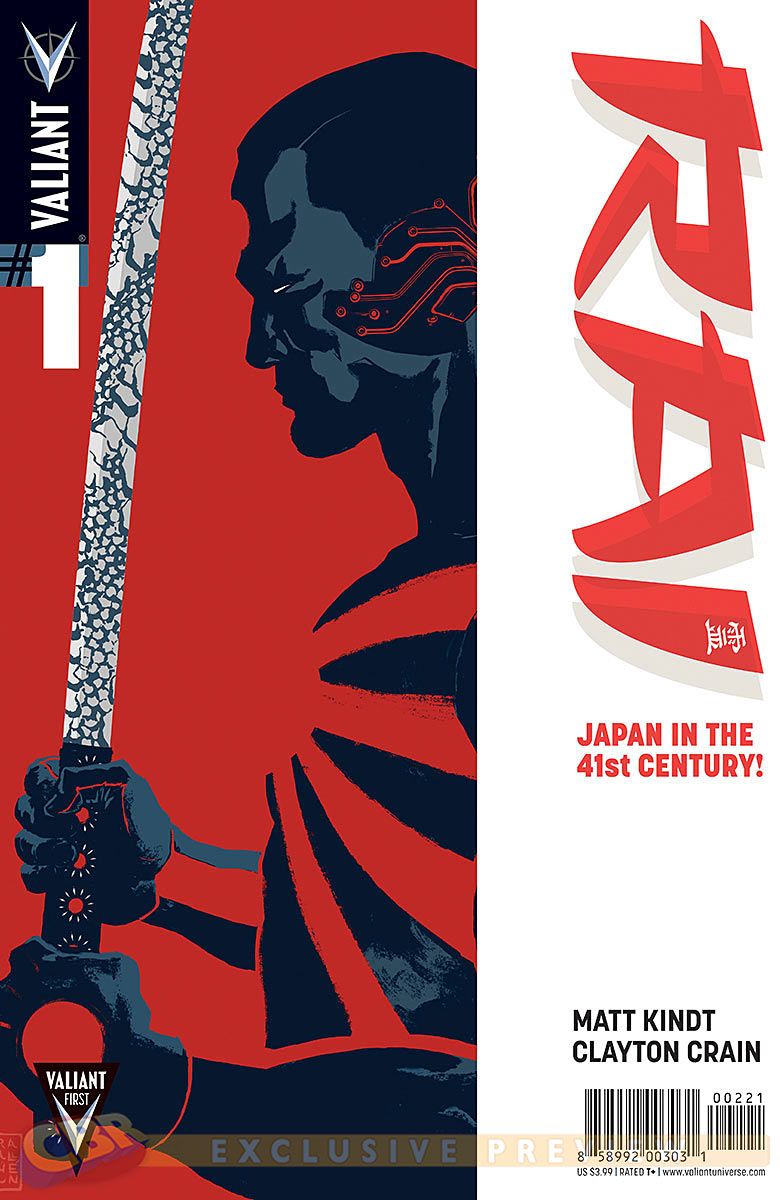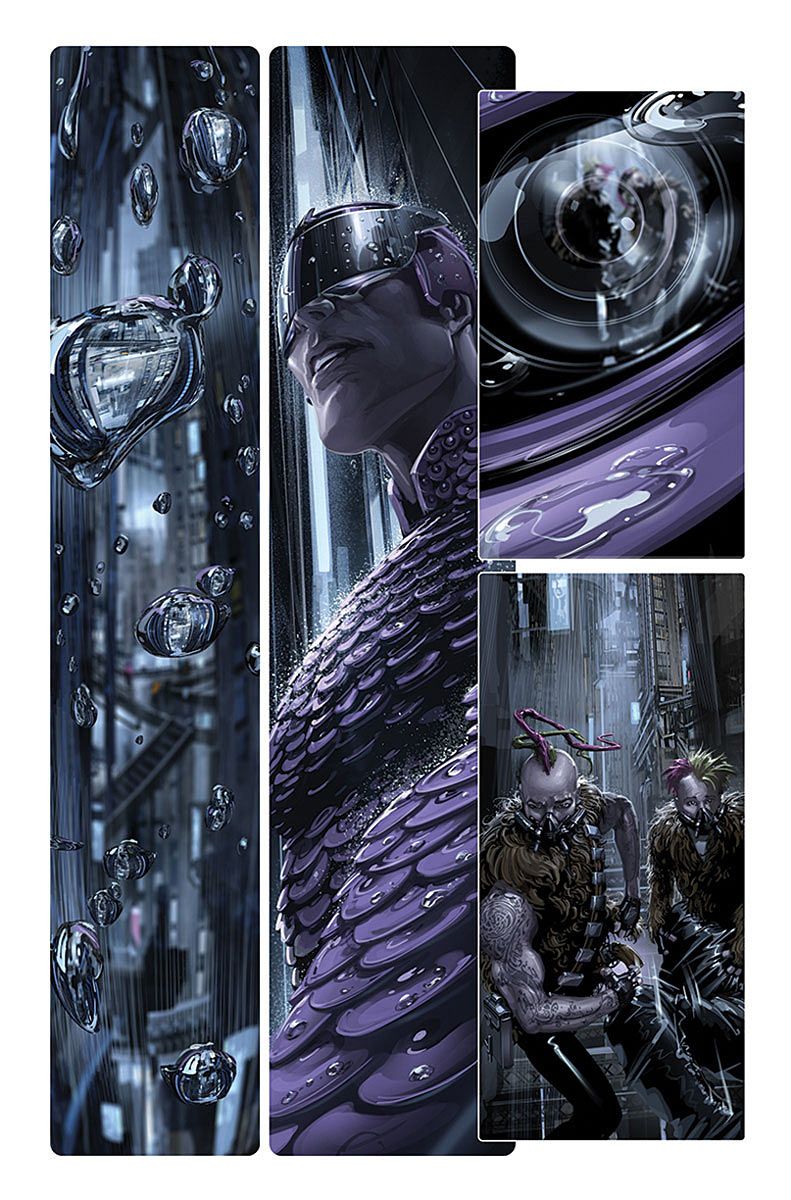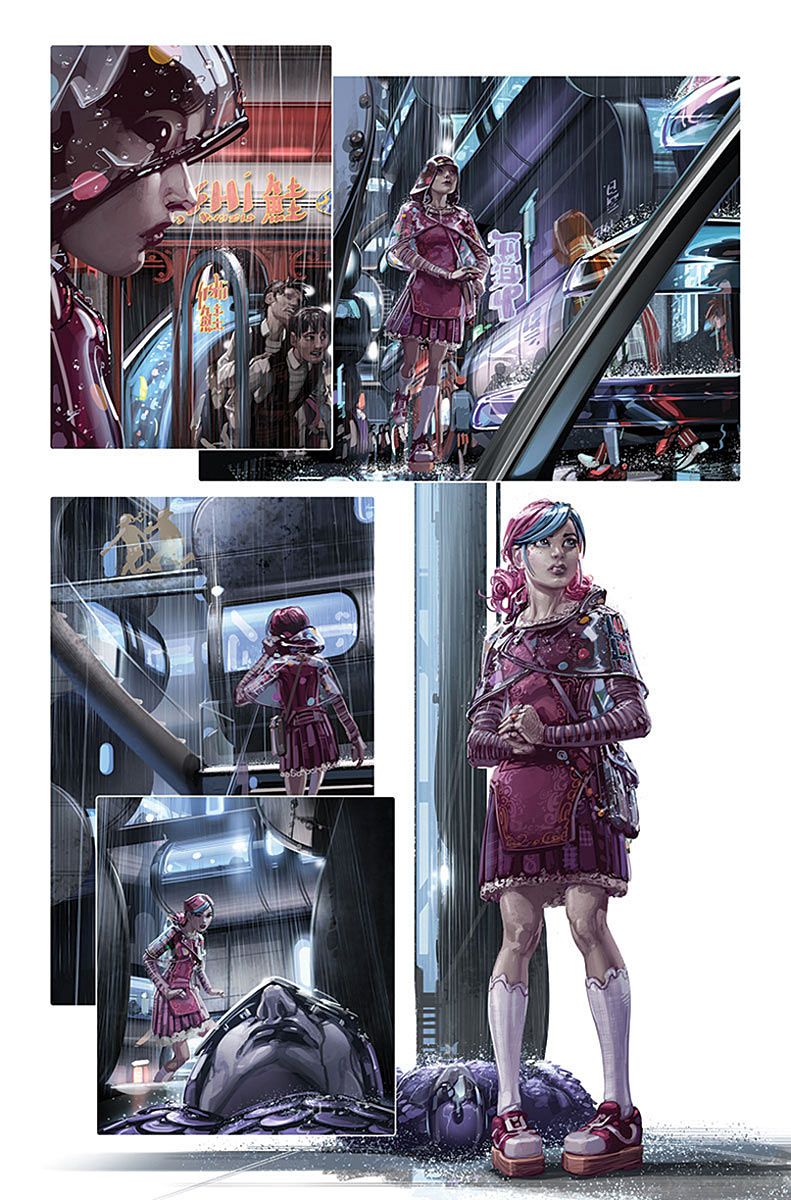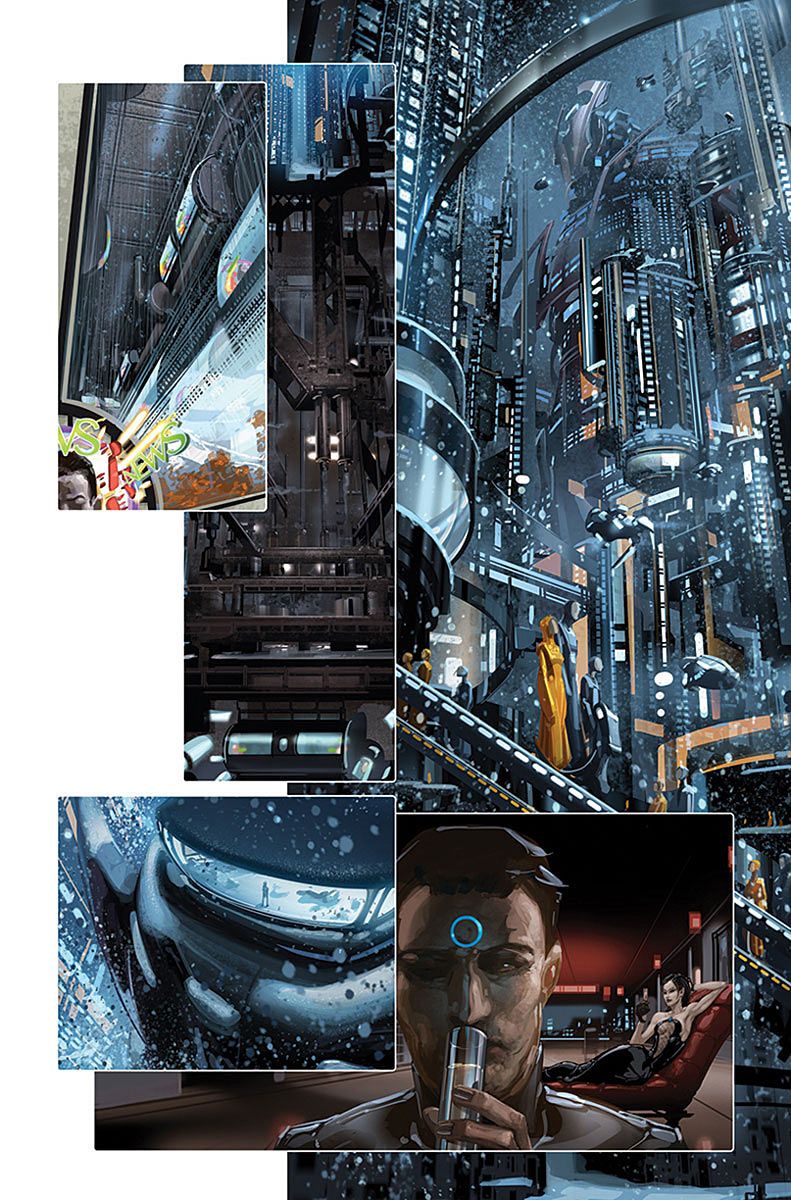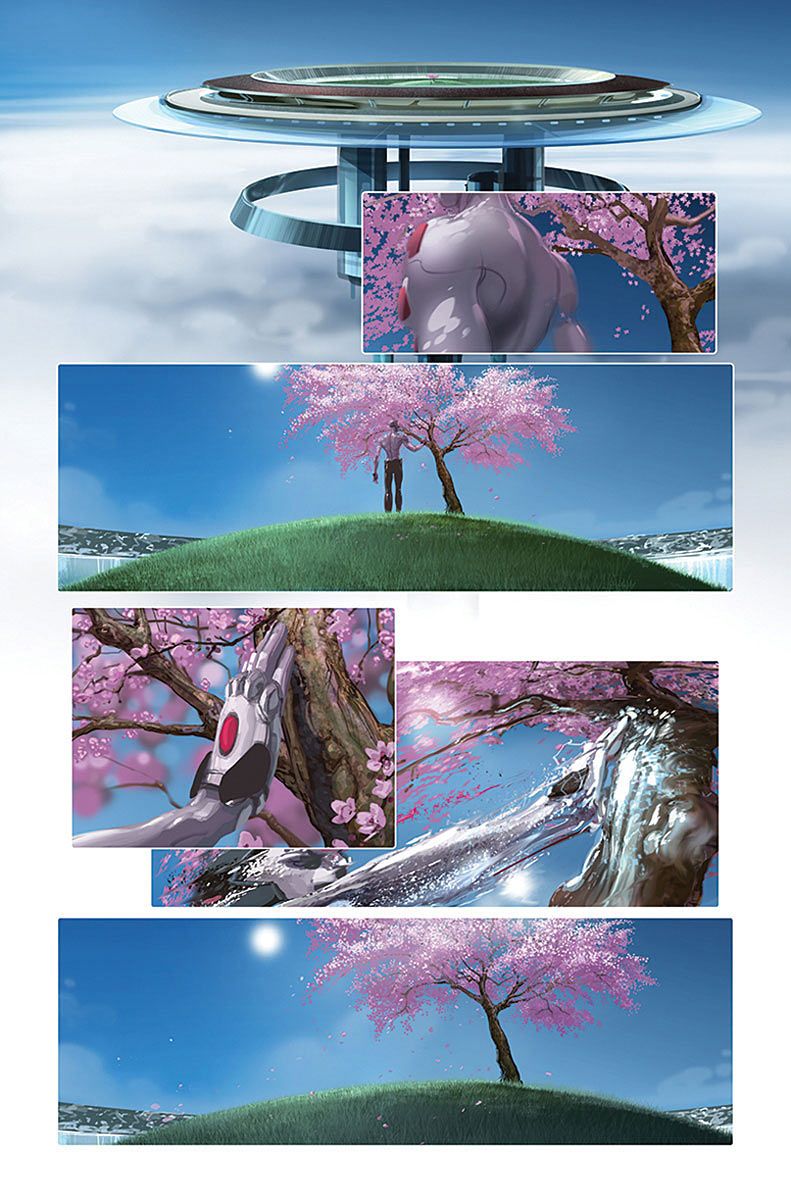The rumors are true -- "Rai" is headed back to Valiant Entertainment's publishing library in May under the hands of "Unity" writer Matt Kindt and artist Clayton Crain -- but don't expect the new version of Japan's guardian to interact directly with many of the modern Valiant characters. Kindt's "Rai" takes place in Japan during the year 4001, where the country has evolved into a massive city-state.
Jumping to the future isn't out of character for the title. The original "Rai," introduced in 1991, followed the exploits of many guardians known as Rai throughout Japan's future history. While Kindt was tight-lipped on the actual identity of his Rai, he did state his research involved reading every issue of the original series as well as every issue of "Rai and the Future Force."
In order to shed some light on the recent announcement of Rai's return, CBR News spoke exclusively with Kindt about bringing the future-shifted character to the modern era of comics, his research in crafting the futuristic metropolis of 4001 Japan, the character's motivations and powers, what to expect from the supporting cast and more.
CBR News: Matt, you've worked on "Bloodshot" and you've built a team with "Unity," but this is your Valiant series featuring a solo character that you've built from the ground up. What was your approach to constructing a solo narrative for Rai and how does it differ from your other Valiant work so far?
Matt Kindt: There are a lot of differences between ["Rai"] and anything else I've ever written. As far as solo versus team book -- honestly, I don't ever see any book like that because I feel like every book is a team book in a way. Rai is the title character, but there's going to be a team of supporting cast [members]. Rai is definitely the headliner, but I just feel like every book, every good book is a team book. My approach doesn't change too much, but everything else is different from anything I've ever done. Just setting it 2,000 years in the future and having it be this totally imagined future, that was the most work -- building from the ground up not just the character, but the world he lives in, which was more different than anything I'd ever done.
EXCLUSIVE: Kindt Puts Character First in Valiant's "Unity"
Usually, when you start writing a book, you at least have an established reality -- it's usually present-day, real world. Even in the Valiant Universe, it's the world we live in but with some crazy characters put into the mix and asking, "What if this guy with crazy armor existed in our world? What would that be like?" Jumping forward 2,000 years, I probably did more work on this book than I've ever done on anything. A lot of it won't even appear on the page, necessarily. It's background information and things that make the world tick.
The way the character was constructed in the original Valiant run was that he was the latest in a long line of Japanese guardians. Have you kept with that mythology for the new series, or is this a different take?
Yeah, before I even started I went and re-read every issue of "Rai" and "Rai and the Future Force." I re-read all the old stuff because I don't think I had read it all -- even when it came out in the '90s. I had read the first ten or fifteen issues, and that was so long ago. I was a different person when I read it. So I re-read it all to refresh my memory on what ideas were there and the concepts, because there's no point in rebooting and forgetting anything. Then, it's like, "Why is it called 'Rai?'" Part of the fun is paying homage to that character that I read when I was in high school, taking him and updating him, but keeping him true to his origins.
So without spoiling it, there will be some stuff that will be revealed, if you haven't read "Rai," some of the things will be more of a surprise -- but even if you know the character, it's going to be a slightly different take. He's one of many different protectors, but done in a slightly different way with a little bit of a twist.
Tell us a bit about your version of Rai. Will fans recognize your take on the character, or is it completely new? He seems to have a lot in common visually with Takao Konishi, the 43rd Rai. Could you discuss who this character is and why he seems to look a lot like Bloodshot?
Yeah -- no. [Laughs]
I don't know how much to spoil, but the series is going to work in a way where you see this world through his eyes. There's going to be another character, this teenage girl, and you're also going to be seeing this future world through her eyes as well. We'll shift point-of-view from him to her as the series progresses and then bringing in another character.
I think he's the protector of Japan. He's working for this mysterious father figure he calls "Father," which may or may not be anything. Especially in the first few issues, you're going to wonder exactly what this Rai is. Is he human? Is he something different? He's got some similarities with Bloodshot -- which memories are real, that kind of thing. There'll be some reveals there, too. It's a part of a story that's slowly going to unfold. He definitely has questions about who he is, where he came from. He starts out as this protector of Japan and as the series goes on, he's going to have doubts about Father and Japan and what he's really doing. He'll be learning along with us.
Kindt Takes Aim at "Bloodshot" #0
Since you've already worked on Bloodshot, how did you approach a character like Rai that has a lot of the same themes, but approaches them with both a different cultural perspective and temporal perspective?
It's tough. I feel like the key with Bloodshot and with Rai is finding some kind of human connection. I think Bloodshot was probably the hardest because of the nature of what he is. I felt like to get a handle on that character, I had to figure out, "Are we rooting for this guy? Is he a killer, a robot? And why do I care?" That's what I'm trying to establish with Rai. I want you to care about this guy. He is the title character, he's not a blank slate. He's going to have feelings and emotions and thoughts. He's going to be scared sometimes. I just want to start him out as being this scary, awesome, kick-ass guy, but as you get to know him, you realize he has doubts, he has some problems, and you actually care about him, rather than just have fun watching him kick ass. He'll do that too, [Laughs] but I think you need a balance of both.
I did a bunch of research. I'm drawing on a bunch of Japanese mythology and different sources of inspiration. I did a lot of research for that to come up with backstory and I had to fill in 2,000 years of Japanese history in addition to the history they already had. There's a bunch of research there and really, the world-building -- it really is the most work I've ever done writing a single issue of everything, just getting the world ready and populate it with him and have him move around. Japan and the atmosphere and where the action takes place is just as much a character as anyone else.
With all this research that you've done into the history of Japan and considering the traditional legend of Rai, are there any plans for you to explore the history of Japan?
Oh yeah, that's the great thing. Going 2,000 years in the future, we broke the seal on the Valiant Universe -- at least for me -- in what we could do or what we could show. I'm not doing any future stuff, but there's 2,000 years of stories to mine that we haven't seen since we jumped that far into the future. There's definitely going to be Rais from the past, and not just Rai-type characters, but other characters that will impact what we see in the future. There's a lot of interesting stuff -- and not just Japan. What happened to Earth in 2,000 years? I think the Eternal Warrior is an easy character [to include]. Chances are, he's still alive. I have to establish Rai's world, and then it'll be fun to branch out from there and see what happened. What were the ripple effects of stuff Harada is doing in our time? How does that ripple out into the future? Just tons of stuff. I can't wait to get to it all.
I know you're wary of spoilers, but could you talk a bit about Rai's power set? How have you developed it to help reflect who the character is and the futuristic time period?
He can transport himself around Japan. If you read the old series, it was kind of vague. I was reading it and thought, "How does that work, exactly?" He would jump through these tubes, through the ether and he could travel from place to place. I've set it up so he can do that as well because Japan is massive at this point. They didn't really build out because the land mass of Japan is confined, so they built up. There's thousands of layers and cities and civilizations -- not civilizations, but different sections of their society that built on top of each other over time. It's huge. It's really tall.
For him to travel, he needs to be able to do it in a quick way, so he has a way of doing that, which I'm going to try and explain more creatively. To me, how it happens is important. It needs to make sense. A lot of that is going to tie in with things happening in the present day with Livewire in "Unity." It's something that comes from her that's really going to affect [Rai's] power set and how it works. It's not nanites or anything, it's something else. It's actually called the Live Wire at this point, but Livewire's dead and gone in the future. It's something that she had done that enables him to do the things he does. He'll be able to transport around, generate some crazy kind of weapons similar to how he used to, but I'm going to provide more of a science explanation for it.
That's one of the things I like about the Valiant Universe is that as crazy as things can be, it always feels like there's a way it can happen rather than something arbitrary and crazy. There's a science behind it.
Touching back on something you noted earlier -- every comic is a team book at its core. Who are the other characters and supporting cast readers might see during your first arc on the book?
We're going to introduce Spylock -- that's not going to mean anything if you haven't read the old one -- he was in the original series, and he was one of my favorites. He was really interesting back then, and he's in the first issue. Honestly, all the supporting cast you see in the first issue, even if it's just for a couple panels -- I hate springing characters on people or bringing somebody in later. I like planning things early because if you go back, not only does it pay off, but it proves that I know what I'm doing. [Laughs] It's kind of a double purpose.
Spylock is awesome, he was in the original series, he's going to be in this one. He's totally different in some ways, other than the name. That was crazy. I was like, "A character called Spylock? You can't not have a guy like that in your book." He's going to be neat. He's this mythological spy character who you're not even sure is real. Even in the first issue, you get glimpses of -- he's almost like a legend. People have heard of him, but nobody's really seen him. There have been movies and books about him, people think he's a fictional character. In the first issue, you meet him and realize that he is real.
CBR TV: Shamdasani Looks Forward to Valiant's Future
There's a woman that's sort of going to be Rai's -- I don't know if she's a love interest, but there's a twist there because she's a robot, so that's going to be weird. There's this teenage girl who's your eyes into the world. She's your introduction to Japan, so the first issue's told from her point of view and she's keeping this journal. She's watching all this stuff happening, and she's 17 years-old. She's never seen Rai. She's heard about him as a legend in Japan, which is so big and so massive that you could go your whole life and not see Rai. She's heard about him, she's seen him on the news and she's blown away by him.
One of the big bad guys -- I don't want to spoil the end of the first issue, but there's one of the bad guys from the old series. There's going to be a lot.
You're working with Clayton Crain for this project. What about his art do you think makes it well suited to the character and the story you've got planned?
Man, the pages I've seen so far are amazing. They look good on their own, but he's telling a story, too -- which is something that I really appreciate. Superficially, his art is great -- the tone it sets, but even his panel progressions and the way it tells the story. My first script -- the first issue -- is not an easy thing to draw. I knew writing it that it was going to be horrible to draw, because I draw, too and I felt kind of bad. There's so much detail jammed into that first issue to set the scene and just to get it all in there, it was just amazing. He can do anything.
I describe the logo on the teenage girl's t-shirt. I gave him a description -- it's the big Florida orange bird with the big head and the beak, like that but different and holding an AK-47. It's going to show up later and play a role. He was designing all this stuff. He was doing so much more work than he probably should have to [Laughs]. It's looking good, he's building a whole world. That's the thing about the series. The setting is a character. He's going from this rainy level of Japan and then we go up. Where Rai lives is completely different. It's traditional, old medieval Japan. There's also tons of stuff in between. There are 1980s crazy homage levels of Japan that we travel through. Every page is something different that [Clayton] has to come up with and make look good. It's awesome. I hope he doesn't hate me by the end.
Considering your association with "Unity," you already mentioned that there are some links that readers can look for between that book and "Rai." Can fans expect to see a lot of that surface-level interaction between the books while you're involved with both?
I think so. That's one of the fun things about writing Valiant year 4000 is planting seeds in the present-day titles -- not just "Unity." I'll be able to react to everything -- stuff in "Eternal Warrior," there's going to be a huge thing that happens in "Rai" that connects in "Eternal Warrior." Livewire's going to have a huge role. It's neat because it's a direct connection, but it's a 2000-year gap. If you're reading both, you can piece together or connect the dots from present day to where Rai is in the future. It's a challenge as a writer, but it's also great. It rewards you having read more than one title without it being an overt crossover. It's a subtle thing that helps you enjoy both books more.
"Rai" #1 by Matt Kindt and Clayton Crain hits stores in May.

